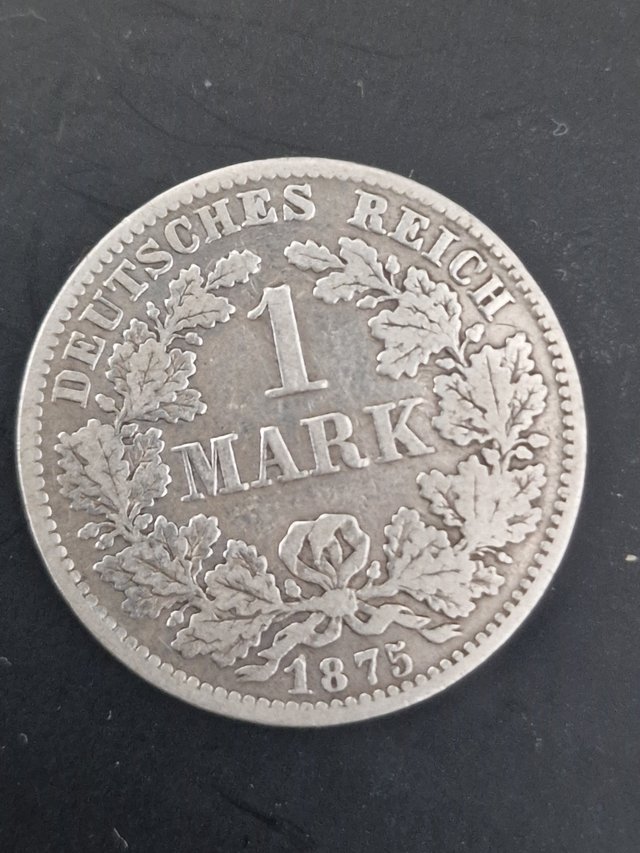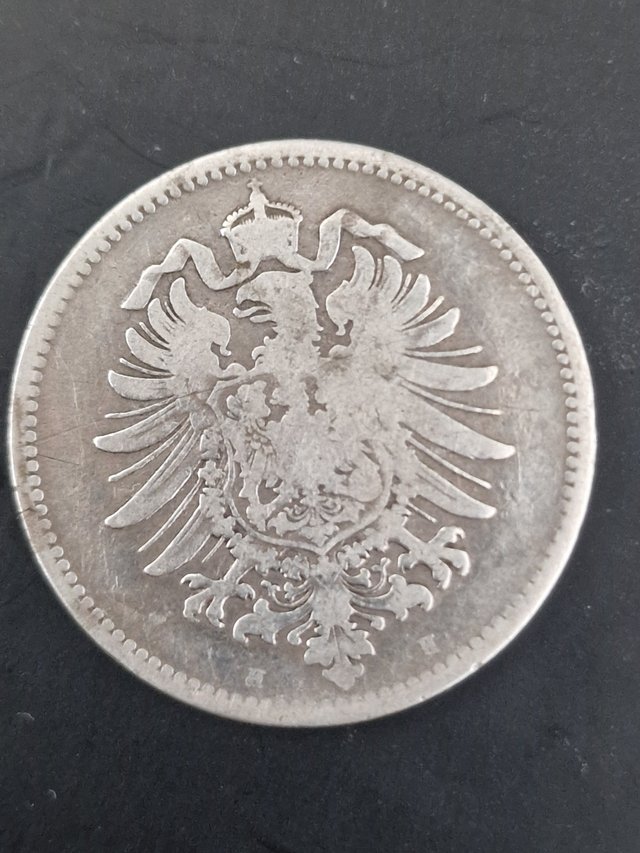1 MARK 1875
The coin I am showing today is one of the most interesting examples from the 19th century, namely a 1 mark coin of the German Empire minted in 1875. This was an extremely important period in European history, because just a few years earlier, in 1871, Germany had been unified under the rule of Wilhelm I, and the newly formed Empire needed a uniform monetary system. Until then, various duchies and kingdoms had used their own currencies, which caused chaos in trade and administration, so the introduction of the German mark was a real step towards modernity. The coin was made of 900 silver, weighed about 5.55 g and had a diameter of 24 mm. Its value was based on its precious metal content, which made it a stable and widely accepted currency not only in Germany itself, but also in international trade. On the obverse, we see the inscription ‘Deutsches Reich’ along with the date 1875 and the denomination surrounded by a beautiful oak wreath, which symbolised strength and durability. The reverse is decorated with a majestic imperial eagle with a crown and coat of arms on its chest, emphasising the power of the new state and its aspirations to be one of the major European powers. The appearance of the coin alone is very impressive and shows that, in addition to its payment function, it also had propaganda significance, reinforcing the image of a strong and united German Empire.
An interesting fact is that the German mark of 1875 was part of a larger currency reform, which established a precise link between the value of money and silver, and from 1873 Germany officially adopted a gold-based system to ensure exchange rate stability and facilitate international trade. The 1 mark coin became one of the most recognisable and widely used units, and its beautiful design means that it is still very popular with collectors today. Copies in good condition can fetch high prices at numismatic auctions, especially if they come from rarer mints marked with the letter ‘u’ at the bottom of the reverse. Interestingly, silver marks from the late 19th century were still in circulation during the First World War, and their popularity was so great that even after the fall of the Empire in 1918, they continued to be used in everyday transactions. Today, holding such a coin in your hand, you can feel the weight of history, because it is not only money, but also a symbol of an era of great political, economic and social change. It seems incredible that a small silver disc, which in 1875 could be used to pay for food, clothing or train travel, has today become a valuable relic, testifying to the beginnings of modern Europe and the ambitions of the young German Empire. It is coins like these that teach us that history is not only found in books, but also in small everyday objects, which over time become priceless testimonies to the past.


